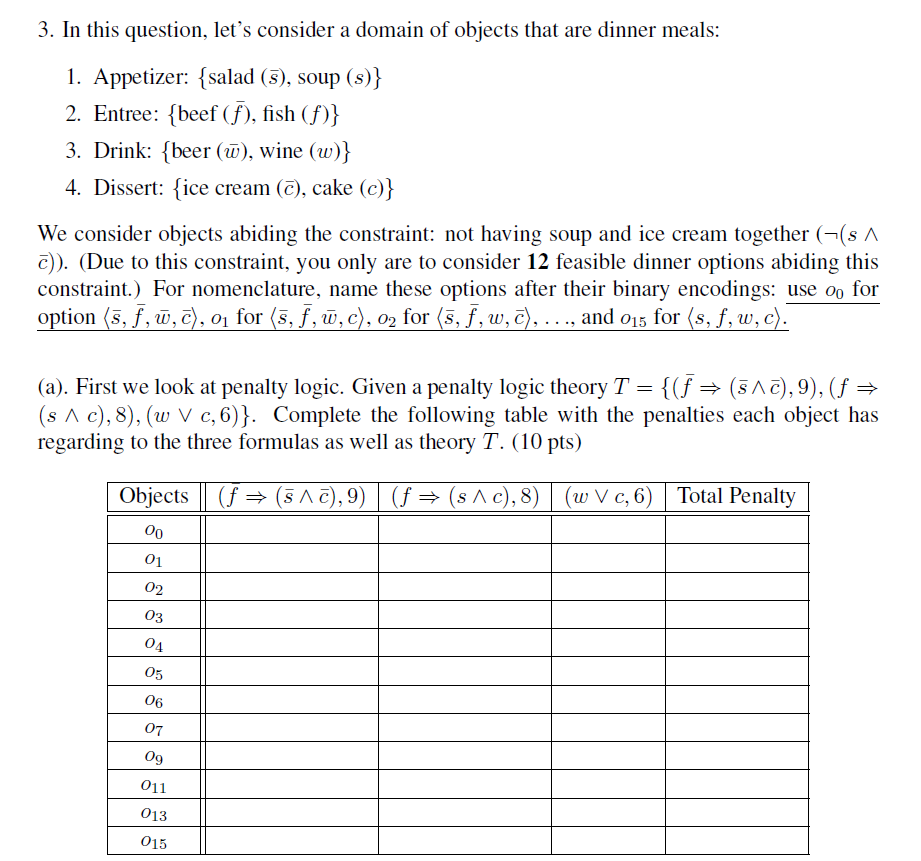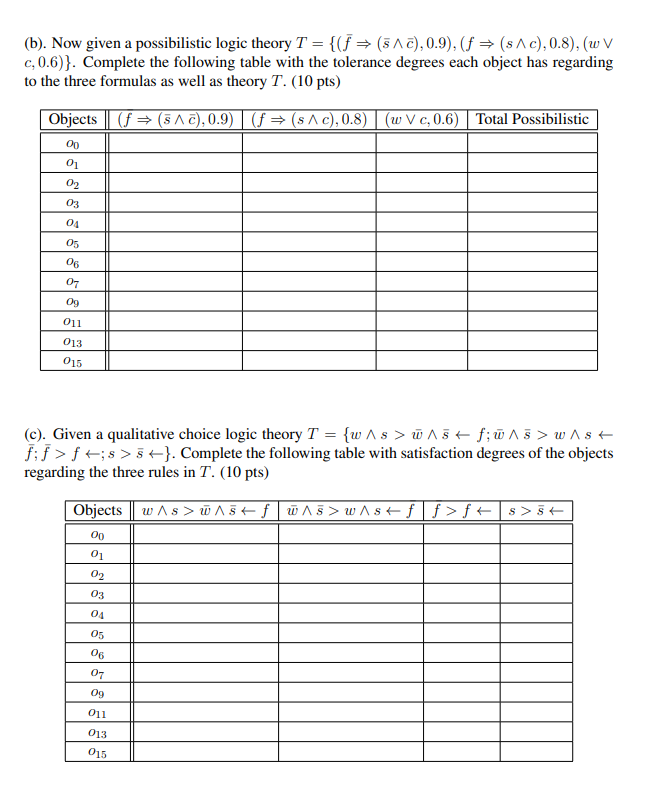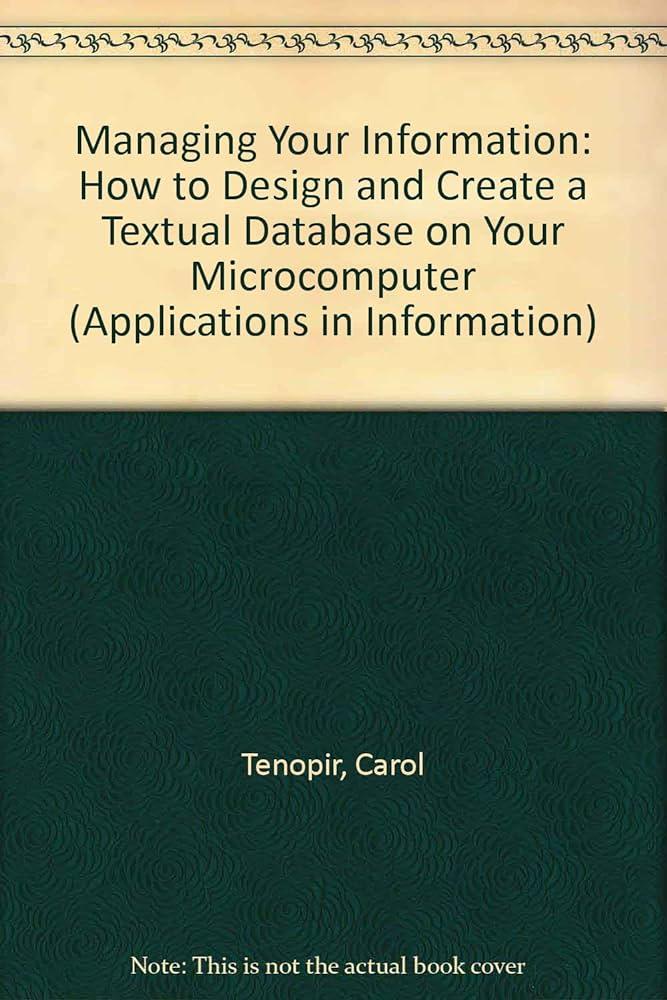Answered step by step
Verified Expert Solution
Question
1 Approved Answer
3. In this question, let's consider a domain of objects that are dinner meals: 1. Appetizer: {salad(s),soup(s)} 2. Entree: {beef(f), fish (f)} 3. Drink: {beer(w),


Step by Step Solution
There are 3 Steps involved in it
Step: 1

Get Instant Access to Expert-Tailored Solutions
See step-by-step solutions with expert insights and AI powered tools for academic success
Step: 2

Step: 3

Ace Your Homework with AI
Get the answers you need in no time with our AI-driven, step-by-step assistance
Get Started


